9 Easy Tips to Turn You from an Orchid Killer to an Orchid Master
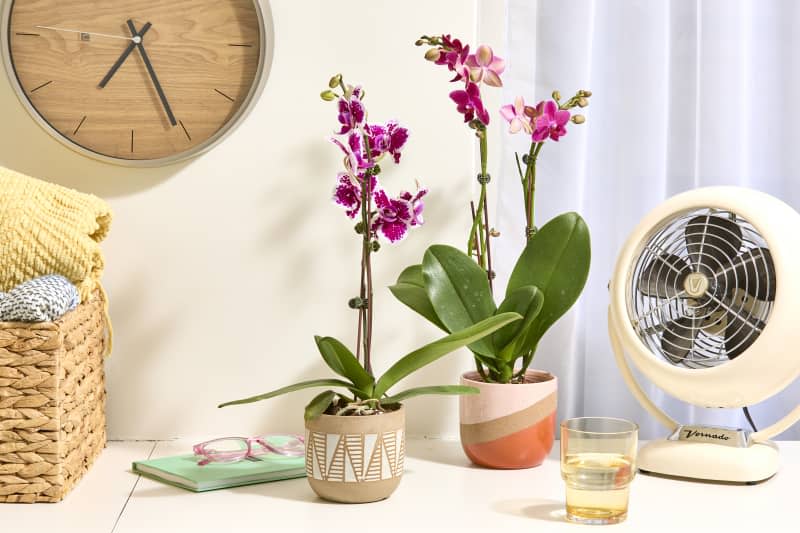
Orchids have been the darlings of the horticultural world for hundreds of years. Collectors spend fortunes just to claim a rare specimen for their own. Because of the number of varieties available, the advice for how to care for orchids can run the gamut — these flowers can all the way from pretty easy to ridiculously finicky. After all, orchids are the largest family of plants in the entire world (over 30,000 species!) and their reputation precedes them.
These days, most people are scared of them. Scared to kill one, really. And believe me, I’ve been there. I’m a seasoned houseplant parent with a flower farmer for a mom, and I didn’t own an orchid for 10 years because I figured it would be so hard to care for that I’d end up killing it.
Oh boy, was I wrong! And now that I’ve figured that out, I want to help you get over the orchid fear hump, too.
What you need to know is that there are many orchid species that are easy to grow, which will grow and bloom and thrive in your home. With a little research, you can set yourself up for orchid-owner success.
This would be the time to mention that if you’re trying orchids out, don’t get swept up in the I NEED THEM ALL craze, because believe me, it will come! Try your hand at one orchid until you feel comfortable, and then think about expanding your collection.
Remember that every species has different care requirements and growing habits. Generalized advice, like what I’m giving you here, should be taken as a starting point and not an end-all-be-all care guide to every single orchid variety. After all, like I mentioned, there are 30 thousand of them. Do the specific research on the variety you take home, and your plant will thank you.
That said, if you’re starting out, here are some reliable tips to turn you into an orchid pro in no time.
Pick a Healthy Orchid
To really succeed in keeping houseplants, you have to set yourself up for it! If you bring home a sickly orchid, you’re already starting at a deficit.
Healthy orchid leaves are leathery to the touch, firm, and perky looking.
If the leaves are dark green, that means that the plant hasn’t received enough light, but that can be easily remedied over time in your care.
If you see that any part of the plant is black or brown, pass and find another one.
The roots should be healthy, too. They will look different depending on the species, but should generally be light and firm. Any roots that are mushy, dry, or brown are a no-go.
If you think something looks a little strange, do a quick Google search or compare it to others around it.
And when in doubt, just put it back.
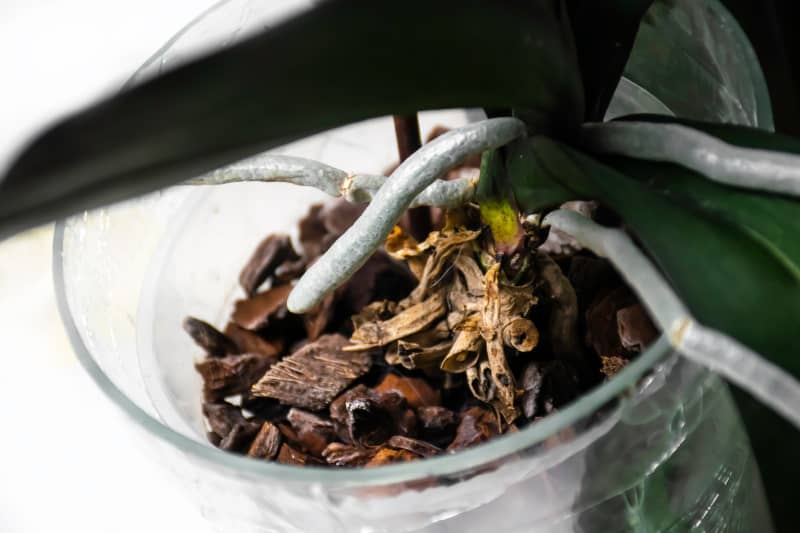
Use the Right Soil for Your Orchid
Most orchids you will come across will be epiphytes — air plants that naturally grow on rocks and trees in the wild. They get almost all of their water and nutrients from the air surrounding the plant, not the soil.
Epiphytic orchids should never be potted in traditional potting mix. (Other varieties, like jewel orchids, are terrestrial and do grow in soil, but you’re less likely to find them readily.)
Orchids should be grown in a specialized mix. Look for one that is made with the following:
Bark
Vermiculite
Sphagnum moss
Perlite
It is very important for air to be able to flow between the roots of the plant. You can find premixed orchid medium in any place that sells potting mix.
If you’re new to the game, it’s best to pot your orchid in a container with drainage. You can find all kinds of decorative orchid pots that have holes in the sides for drainage and air circulation.
Fertilize Your Orchid
Orchids do require fertilizer to thrive, but you should only fertilize when they’re not dormant — that is, when they’re showing signs of growth.
You should also only fertilize your orchid when it’s not flowering.
As for how to fertilize an orchid, look for a fertilizer appropriate for the type of orchid you’re growing. You’ll need to mix it with water to apply; orchids can sometimes be sensitive to the chlorine that’s in tap water, so some orchid devotees leave their tap water out 24 hours (to allow for the evaporation of these chemicals) before using it.
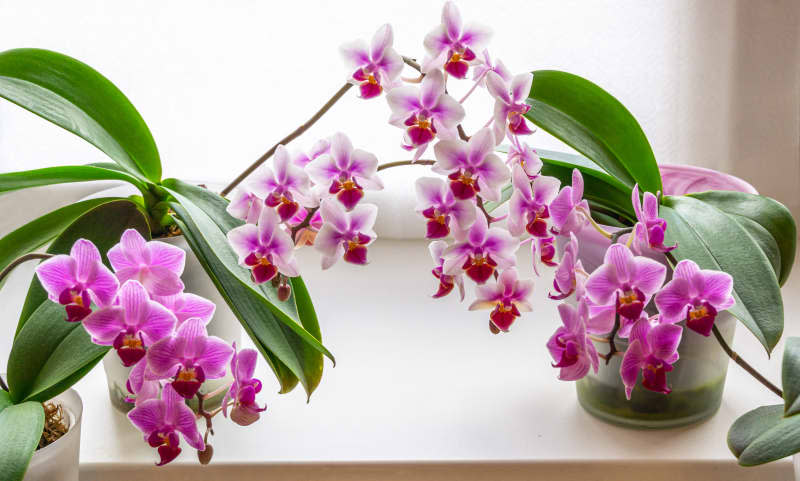
Give Orchids the Right Amount of Light
As a general rule, avoid direct sunlight. Most orchids are extremely susceptible to sunburn.
Place your orchid in a spot that gets morning or afternoon sun. A west- or north-facing window may be best, depending on your home.
If you have no choice but to put it in a window with direct sun, make sure there’s a barrier between the window and the plant. A sheer blind or shade will do the trick to diffuse the light.
Never Overwater Orchids
This is where orchid care can get a little tricky.
Orchids love humidity, but cannot handle being overwatered. They also will suffer if they’re left to dry out.
Each species is different, but a good way to start off it to set a watering schedule — and set a timer for it on your phone.
Some orchids will be fine with watering once a week, but others need to be checked every three days or so, especially if your home is very dry.
If your orchid is sitting in a cache pot (a plastic pot inside a pot with no drainage), make sure you empty the cache pot after you water your orchid.
Under no circumstances should an orchid be left to sit in water. Overwatering spells doom for these houseplants.
As far as temperature goes, some orchids are more temperate than others and can handle cooler air. However, don’t let any orchid be exposed to temperatures under 50 degrees Fahrenheit.
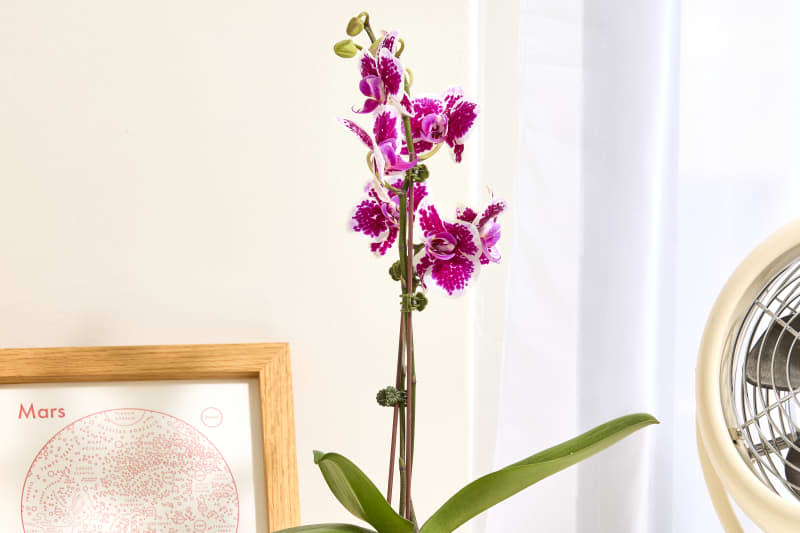
Give Your Orchid Some Air
Orchids that are left to sit in water or damp potting medium will begin to rot.
To prevent this, make sure the air around your orchids is always moving. A slow moving ceiling fan is more than enough, but if you don’t have one, try setting up a small desk fan in the general vicinity to where your orchid lives in your home.
Care for Orchids After Blooms Are Spent
After your orchid has flowered, the blooms will dry up along with the stem. At this point, most newbie orchid owners think that the plant is dead and will throw it out.
Don’t do that!
With a little trimming and patience, you can easily bring your orchid back into bloom.
After the blooms are finished, trim back the flower spike to the base. Each orchid is a little different, so it will be helpful for you to check out the trimming requirements for your specific species.
As you coax your orchid to bloom again, continue with your typical care and watering schedule.
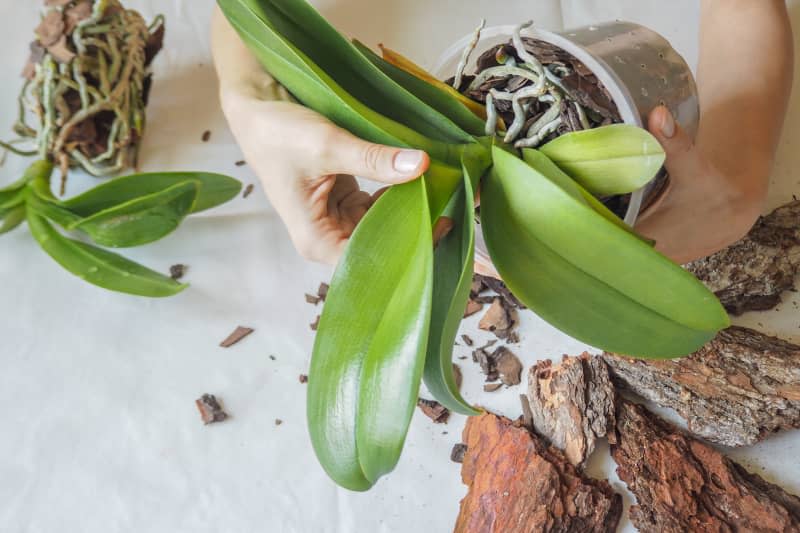
Repot Orchids for New Growth
Yes, like your other houseplants, orchids will need to be repotted. You should do this every couple of years, when the roots start to look crowded.
Repotting helps promote the overall health and new growth of your orchid.
Choose a Beginner-Friendly Orchid Variety
Some orchids are easier to grow and care for than others, and choosing a variety that is a little more forgiving will drastically increase your chance of success. Here, some of the best options for newbies.
Note: Most members of the Orchidaceae family are nontoxic to cats and dogs, but research your specific variety to ensure the safety of your furry friends.
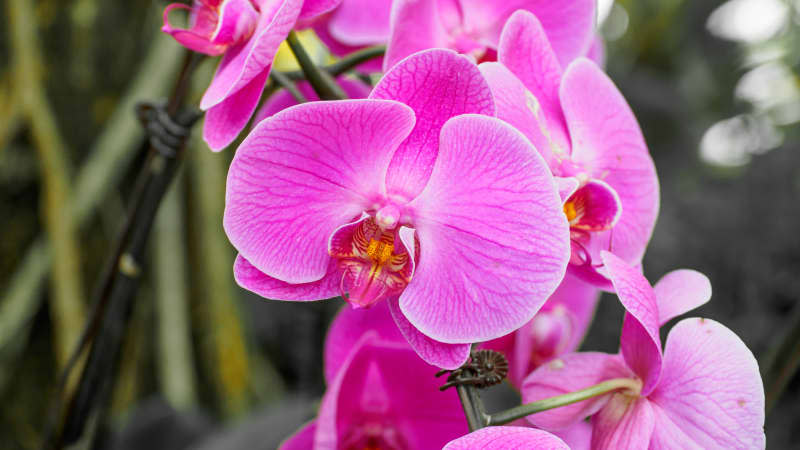
Phalaenopsis
Best beginner variety: Phalaenopsis amabilis
The Phalaenopsis, also known as the moth orchid, is extremely hardy. These are the orchids that you see everywhere, from the florist to the discount grocery store.
Billions of moth orchids are imported into the United States every year, and they’re very affordable. For this reason, moth orchids are also the variety most likely to get chucked out after the blooms die back.
If cared for correctly, the moth orchid will bloom multiple times a year. Moth orchids can take some neglect, which is why they’re a perfect beginner orchid.
One note, though: Avoid any moth orchid that has been spray painted or dyed an unnatural color.
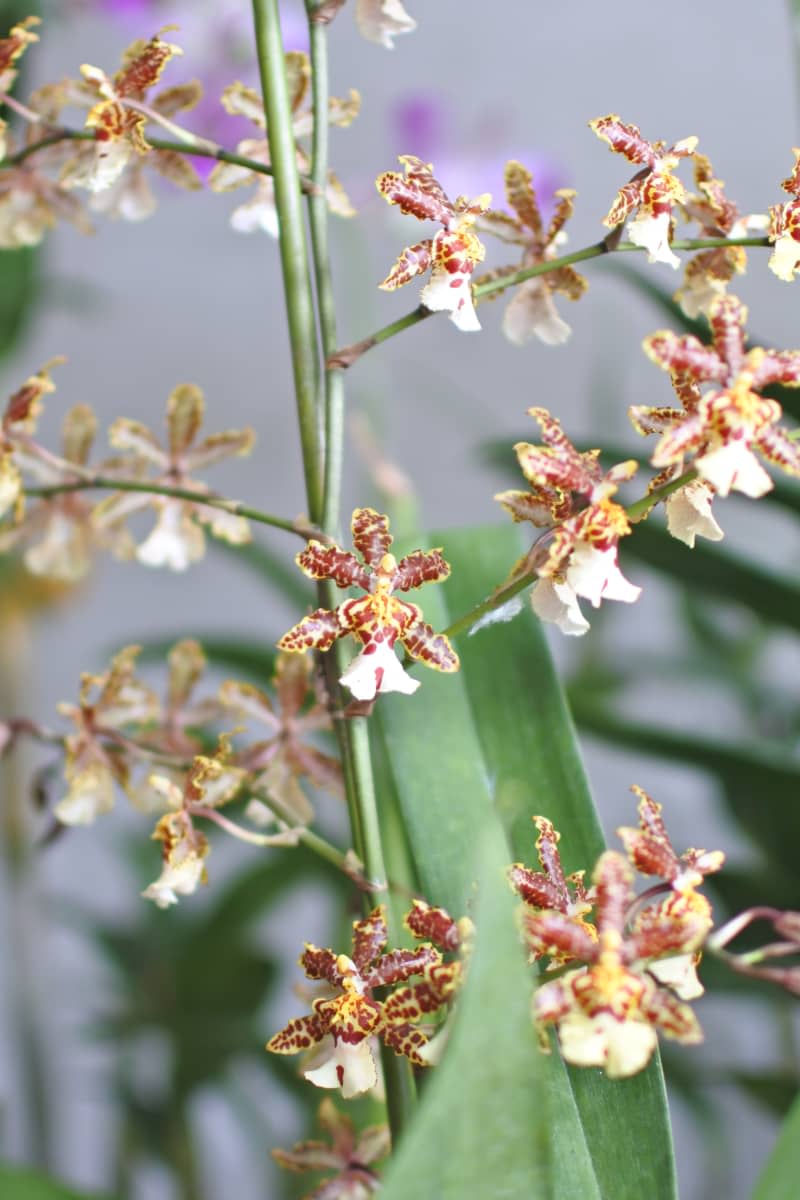
Oncidium
Best beginner variety: Oncidium leucochilum
The Oncidium leucochilum, or dancing lady orchid, is a darling addition to a beginning orchid collection.
The dancing lady orchid is a good choice for those who live in draftier, older homes as oncidiums thrive in warmer temperatures during the day and cooler during the night.
The oncidium leucochilum has dainty white, yellow, and brown mottled blooms that appear along the flower spike in a flush, which gives them the appearance of miniature dancers.
These are a long-running favorite, too: A variety of oncidium called the psychopsis orchid is credited for starting the orchid craze during the 1800s. You can still find that variety today!
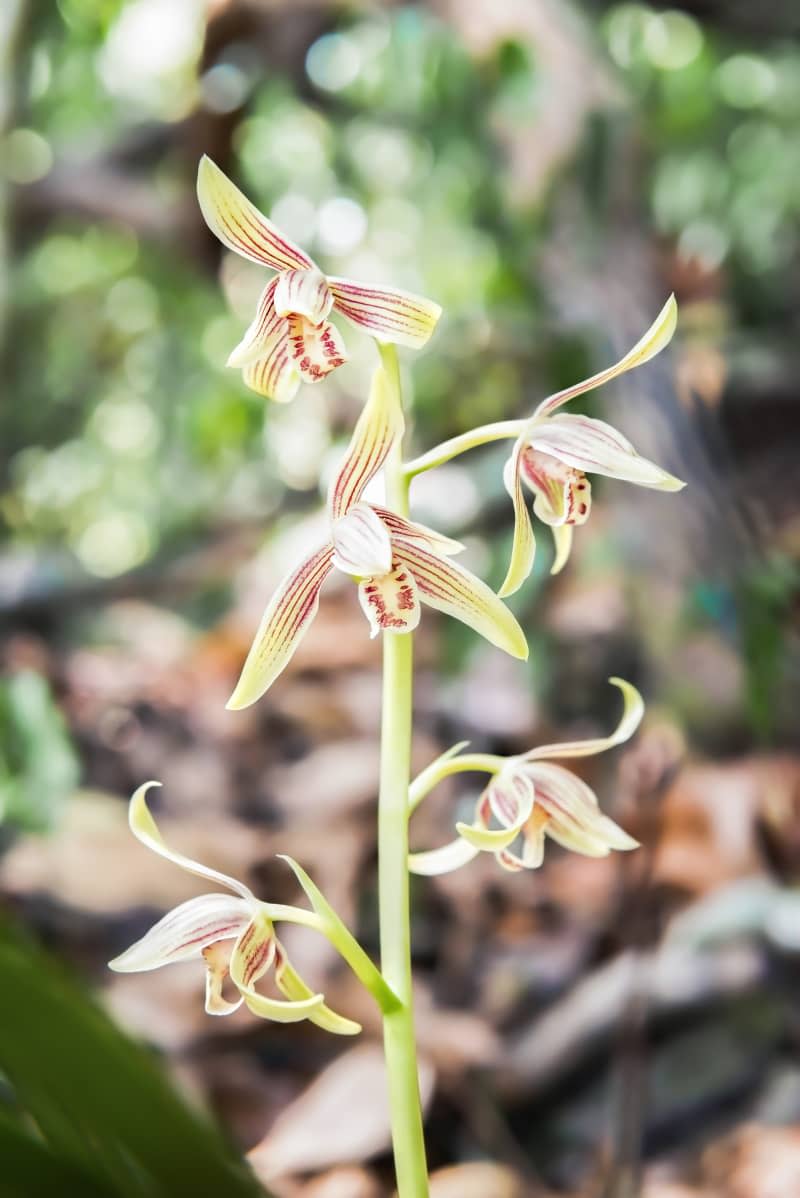
Cymbidium
Best beginner variety: Cymbidium ensifolium
The Cymbidium ensifolium is one of the miniature-flowering cymbidium orchids. Within the industry, they’re referred to as “Asian miniatures.”
Miniature-flowering cymbidium orchids are a great choice for beginners because they don’t require a cooling period that promotes new flower spikes like other cymbidium varieties. They can maintain the same warm temperatures all year and still grow new spikes.
Miniature-flowering cymbidium orchids are also a great choice for a grower that is working with limited space but loves the bloom of the cymbidium. Other varieties of this orchid type can be gigantic.

